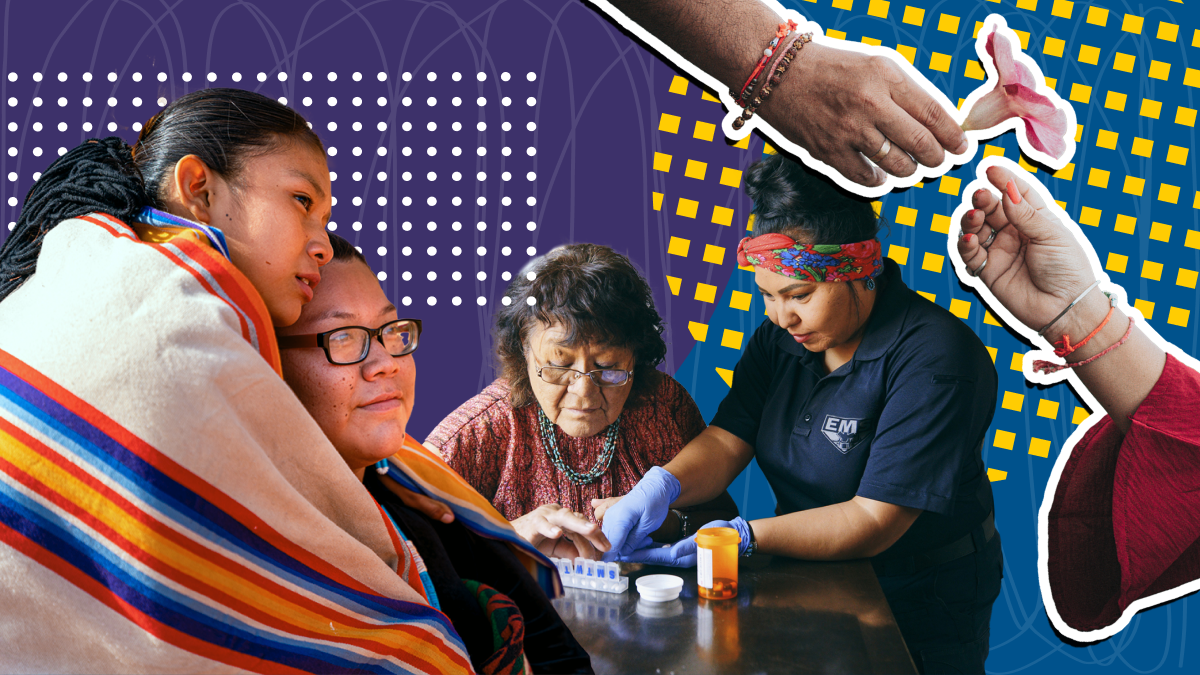Key points
- In 2022, 1,543 non-Hispanic American Indian and Alaskan Native people died by overdose, which was the highest rate of any racial or ethnic group.
- CDC's Division of Injury Prevention appropriated $18 million in tribal overdose funding in fiscal year 2023.
- The CDC Injury Center is committed to comprehensive efforts to address the opioid crisis in tribal and urban Indian communities.

Overdose deaths involving opioids among American Indian and Alaskan Native People, U.S. 2010-2022

In 2022, on average, over 295 Americans died every day from a drug overdose. That same year, 1,543 non-Hispanic American Indian and Alaskan Native people died by overdose, which was the highest rate of any racial or ethnic group.
The CDC Injury Center is committed to comprehensive efforts to address the opioid crisis in tribal and urban Indian communities.
The Injury Center's funding strengthens partnerships among tribal public health and local, state, and federal entities. Funded tribal partner projects are supported to improve opioid overdose surveillance and data infrastructure, as well as develop and implement culturally appropriate prevention strategies.
Tribal funding
Funded organizations
In partnership with other centers at CDC, the Injury Center is providing $18 million in supplemental funds to 10 Tribal Epidemiology Centers, 15 tribes or tribal-serving organizations, and 7 Urban Indian Organizations. These collaborations address issues of data quality, completeness, accuracy, and timeliness. Funding also supports regional strategic planning to address opioid overdose prevention built on tribal strengths.
The Injury Center is also providing $4 million to national partners to provide training and technical assistance to tribes implementing overdose prevention initiatives and establish an overdose prevention track at a national conference.
Tribal Epidemiology Centers
Funding supports 11 Tribal Epidemiology Centers to:
- Strengthen epidemiologic surveillance and public health data infrastructure to address issues of data quality, completeness, accuracy, and timeliness
- Support a multi-disciplinary, data-focused approach between Tribal Epidemiology Centers, tribal nations, and key partners to enhance data quality
- Implement prevention strategies that can be targeted to better address drug overdose in American Indian and Alaskan Native communities
Centers:
- Alaska Native Tribal Health Consortium (Alaska)
- Albuquerque Area Indian Health Board (New Mexico)
- California Rural Indian Health Board, Inc. (California )
- Great Lakes Inter-Tribal Council, Inc. (Wisconsin)
- Great Plains Tribal Chairmen's Health Board (South Dakota)
- Inter-Tribal Council of Arizona, Inc. (Arizona)
- Northwest Portland Area Indian Health Board (Oregon)
- Rocky Mountain Tribal Leaders Council (Montana)
- Southern Plains Tribal Health Board Foundation (Oklahoma)
- United South and Eastern Tribes, Inc. (Tennessee)
- Urban Indian Health Institute (Alaska)
Tribes and tribal-serving organizations
Partner tribes and tribal organizations receiving supplemental funding are working to address strategic plan priority areas:
- Epidemiologic surveillance and public health data infrastructure
- Implementation of evidence-based health systems interventions
- Innovative community-based strategies
Organizations:
- Alaska Native Tribal Health Consortium (Alaska)
- Bristol Bay Area Health Corporation (Alaska)
- California Rural Indian Health Board, Inc. (California)
- Cherokee Nation (Oklahoma)
- Chickasaw Nation (Oklahoma)
- Eastern Band of Cherokee Indians (North Carolina)
- Forest County Potawatomi Community (Wisconsin)
- Great Lakes Inter-Tribal Council, Inc. (Wisconsin)
- Lummi Nation (Washington)
- Northwest Portland Area Indian Health Board (Oregon)
- Rocky Mountain Tribal Leaders Council (Montana)
- Southern Plains Tribal Health Board Foundation (Oklahoma)
- United South and Eastern Tribes, Inc. (Tennessee)
- Wabanaki Health and Wellness (Maine)
- White Earth Band of Chippewa Indians (Minnesota)
National Network of Public Health Institutes
The National Network of Public Health Institutes offers technical assistance and capacity building for tribes and tribal organizations for opioid overdose prevention, in collaboration with the Injury Center. Involved organizations have established a tribal opioid overdose technical expert advisory group to assist with the development and implementation of a technical assistance and training plan. The National Network of Public Health Institutes works closely with Seven Directions, a member national public health institute dedicated to Indigenous health and wellness, to:
- Strengthen public health systems infrastructure
- Improve data and information systems
- Identify evidence-based programs and services
Funding impact on tribal communities
CDC funds innovative community-based strategies in tribal communities that build upon the strengths of local tribal culture, tradition, and practices.
- The Northwest Portland Indian Health Board developed the 49 Days of Ceremony, an Indigenous health promotion framework that aims to connect people to Traditional Indigenous Knowledge and cultural practices to address stigma towards individuals with a substance use disorder, reframe perceptions of health and wellbeing, and promote healing among Tribal community members.
- The Alaska Native Tribal Health Consortium is using technology to promote more informed uptake of medication assisted treatment and empower individuals with an opioid use disorder through an interactive learning experience. Individuals enter the augmented reality platform through a pair of HoloLens glasses and select learning topics ranging from the epidemiology of opioid use to brain functionality.
